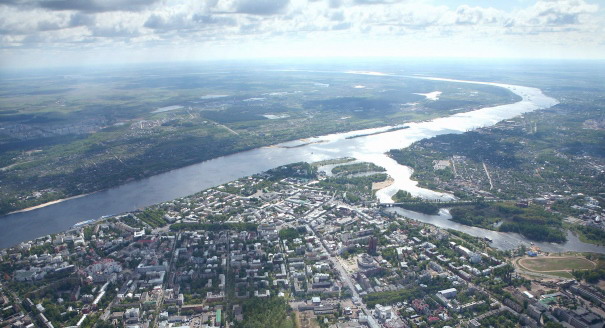Source: NG-Politika
When Russians old enough to remember the last days of the Soviet Union talk about contemporary Russia, they increasingly use the phrase “déjà vu.”
The parallels between the late Soviet era and today are indeed striking: plummeting oil prices; economic recession; aggressive anti-Western rhetoric; increasing militarization; external sanctions; internal restrictions; a leader who is increasingly perceived as inseparable from the country’s essence and existence; grandiose Olympic Games as a source of national pride; and a war on the country’s border that is never referred to as a war. All this harkens back to the USSR of the late 1970s and early 1980s.
And indeed, in drawing comparisons to the last years of the Soviet Union, some amongst Russia’s liberal elite are beginning to wonder how and when a second perestroika might reverse Russia’s trajectory of self-isolation and set Russia on the road to economic reform, democracy, and global integration.
But is this analogy applicable? Not entirely. To assess Russia’s future we should look not to its own recent history, but to the developments in countries that experienced similar transitions.
Economic success also strongly correlates with globalization, even in countries like Turkey, Singapore, and Taiwan, which have never fully democratized. These countries have profited tremendously from diversified trade with the world's largest economies (chiefly the United States and Western Europe), and developed legal systems based on Western norms that effectively regulate trade. Russia, however, is increasingly isolated from the global economy; Russia’s engagement in the world economy essentially boils down to “oil and gas in exchange for food and consumer goods,” while further integration does not appear to be on the horizon.
Argentina provides perhaps the most interesting parallel to Russia during the early years of President Vladimir Putin’s reign. At the beginning of the 20th century, much like Russia in the first decade of the 21st, the Argentine economy flourished. Even World War I and the resulting drop in European demand did not undermine Argentina’s economic success. During this period, Argentina’s per capita GDP was larger than France’s, almost twice the size of Italy’s, and nearly matched that of the United States.
Argentine President Hipólito Yrigoyen’s populist government came to power in 1916, shortly after the introduction of universal suffrage for adult males. After years of sustained economic growth, the Argentine economy started to falter with the onset of the great depression. The government became so overburdened with payment obligations, concessions, and subsidies, that a budget deficit became the norm, as did active government intervention in the economy. In September of 1930, with Argentina’s GDP having returned to 1905 levels, the resulting mass protests led to a putsch, and a military junta forced Yrigoyen out of power.
Much like the Kremlin leadership today, the new Argentine government appealed to ordinary citizens, asking them to tighten their belts even as it acted openly in the interests of a small group of individuals who had divested their capital from Argentina. Import replacement, a central tenet of the government’s economic recovery program, failed completely.
The military junta was forced out of power 13 years later by a second coup, this time from the left; soon thereafter Juan Perón came to power. His plan to save the economy included the nationalization of banks, and of the transportation, energy, and utilities sectors.
Over the next 60 years Argentina endured three more putsches; ten shifts in their economic direction, from “left” to “ultra-left” and back again, with brief periods of half-hearted rightist reforms; and several defaults. Phases of “soft” repressions gave way to periods of nationalistic fervor, during which tens of thousands of suspected dissidents were shot or disappeared, their spouses killed and their children sent to be brought up by the families of loyal military officers. Death squads roamed the country. Decades of friendship with the West withered as the government waged a rhetorical war with the “Western conspiracy against Argentina.”
Today, Argentina’s per capita GDP is three and a half times lower than that of France, and Argentina accounts for 0.6 percent of world GDP (compared to 1.2 percent a hundred years ago). Eighty-five years on, Argentina still does not appear to be on the path to a liberal market economy or a true democracy.
Still, contemporary Russia currently differs from 20th century Argentina in a number of important ways. Argentina’s default economic “fix” was to print money to cover growing social expenses. For now, Russia is maintaining a rigid monetary policy, which has kept destructive economic trends in check. However, presidential economic advisor Sergey Glazyev recently made statements suggesting that the government could pursue a more radical and dangerous course.
As the Russian economy deteriorates, the ruling class becomes more isolated from the West, and society grows inured or even averse to the state’s hyper-ideologization, the current authorities will begin to lose sway over the population. Indeed, as with the Argentine government, it seems likely that economic and political distress will force the Russian government to resort to extreme measures in order to maintain power. Today’s autarchy will perhaps give way to a harsh regime that combines a socialist economy with nationalist politics and tries to control the country through the use of terror.
Like Argentina, Russia’s economic resources will sustain the government for some time, and complete state disintegration is highly unlikely. Still, in 50 years' time, Russians may continue to wonder what kind of perestroika they need to make their country a real democracy with a thriving liberal market economy.
This publication originally appeared in Russian in NG-Politika.



